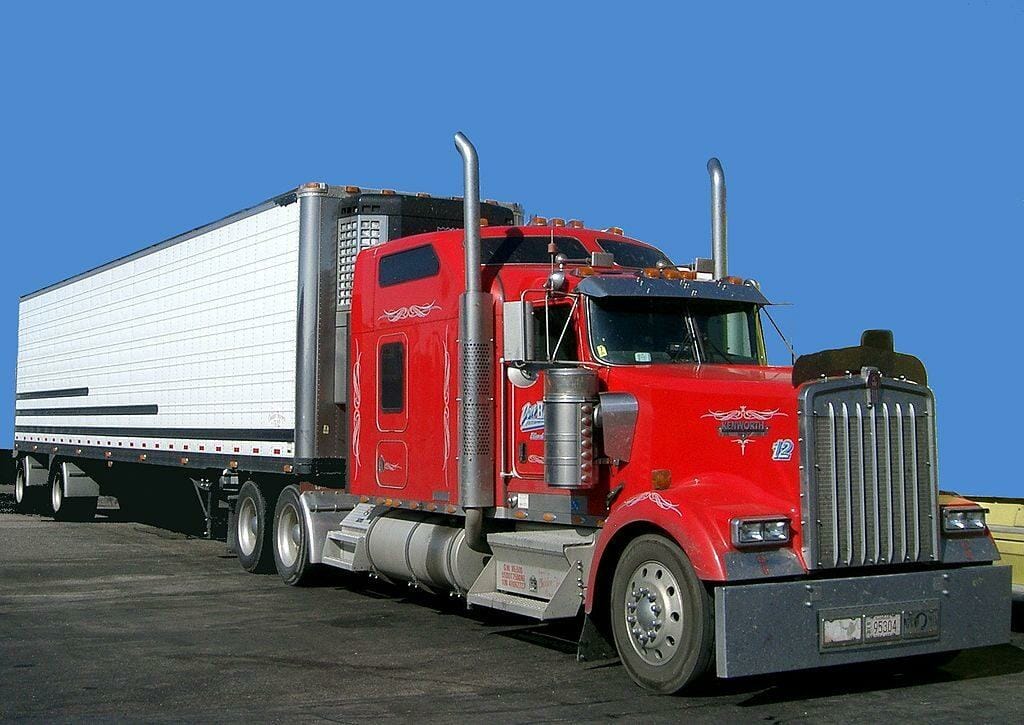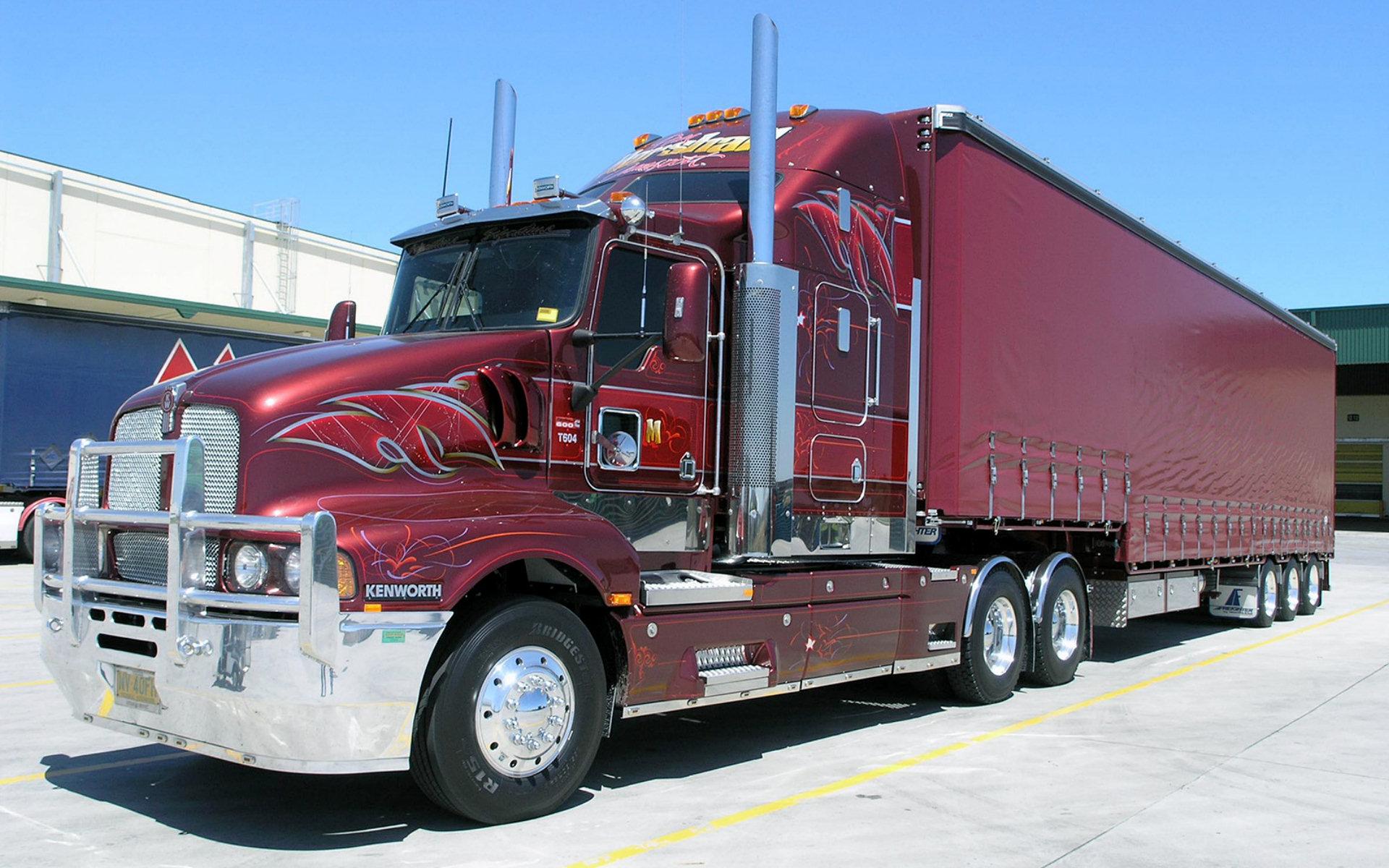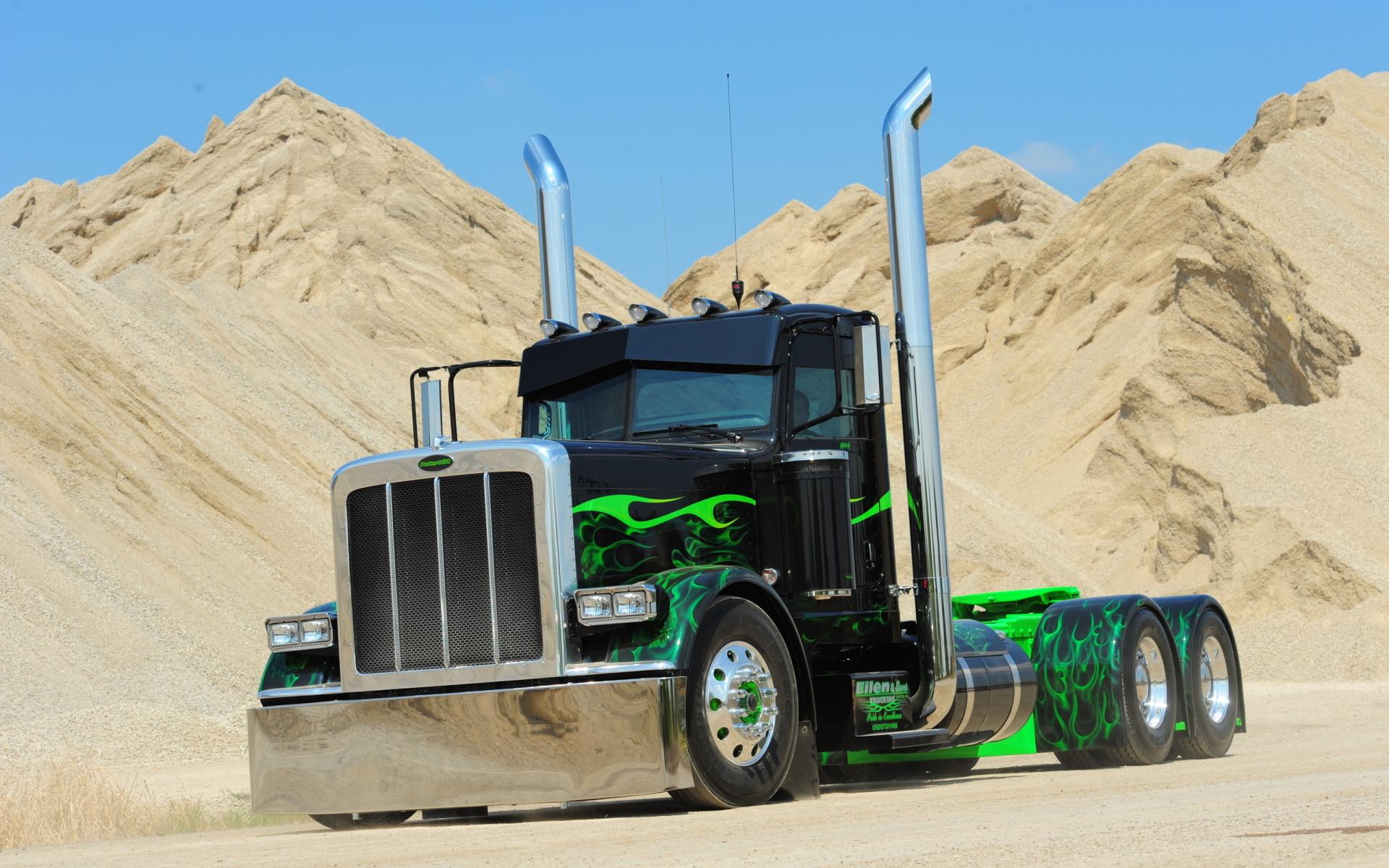Semi RV Conversion: Your Ultimate Guide to Building a Home on Wheels pickup.truckstrend.com
The open road beckons, promising freedom, adventure, and the chance to explore at your own pace. While traditional RVs offer a taste of this lifestyle, a growing number of enthusiasts are discovering a more robust, spacious, and uniquely customizable option: the Semi RV Conversion. Imagine transforming a heavy-duty semi-truck into a luxurious, fully-equipped mobile sanctuary – a true home on wheels built to withstand the miles and cater to your every need.
This comprehensive guide will delve into the world of Semi RV conversions, exploring why these behemoths are becoming the preferred choice for discerning travelers, how to approach the conversion process, critical considerations, and what to expect on your journey to creating the ultimate custom RV.
Semi RV Conversion: Your Ultimate Guide to Building a Home on Wheels
What is a Semi RV Conversion?
At its core, a Semi RV Conversion involves taking a commercial semi-truck (often just the tractor unit, but sometimes a box truck chassis) and meticulously transforming its interior and exterior into a functional, comfortable living space. Unlike simply attaching a fifth-wheel trailer, a semi-truck conversion integrates the living quarters directly onto the truck’s robust chassis, creating a single, cohesive motorhome.
These conversions range from utilitarian, off-grid expedition vehicles to opulent, multi-room luxury coaches rivaling high-end production RVs. The sheer scale and durability of a semi-truck provide a blank canvas for unparalleled customization, allowing owners to design layouts, install full-size appliances, and incorporate features that would be impractical or impossible in smaller RV platforms.
Why Choose a Semi RV Conversion? Unmatched Benefits
The decision to embark on a semi RV conversion journey is often driven by a desire for features and capabilities that standard RVs simply cannot offer. Here are the compelling benefits that draw people to these unique builds:
- Unrivaled Space and Comfort: Semi-trucks boast massive chassis and cab dimensions, providing significantly more interior volume and higher ceilings than most traditional RVs. This translates to spacious living areas, full-sized kitchens and bathrooms, ample storage, and comfortable sleeping quarters.
- Exceptional Durability and Longevity: Built for millions of miles of commercial hauling, semi-truck chassis, engines, and drivetrains are engineered for extreme durability. This inherent robustness means a semi RV conversion can withstand demanding travel conditions and offer a lifespan far exceeding that of a typical production RV, often requiring less structural maintenance over time.
- Cost-Effectiveness (Potentially): While initial outlay can vary widely, a DIY semi RV conversion can often be significantly cheaper than purchasing a comparable luxury Class A motorhome. Used semi-trucks can be acquired at reasonable prices, and the ability to source materials and perform labor yourself can lead to substantial savings.
- Ultimate Customization: This is perhaps the most appealing aspect. You are not limited by pre-designed floor plans or standard features. Every aspect, from the layout and materials to the electrical and plumbing systems, can be tailored precisely to your preferences, lifestyle, and specific travel needs.
- Superior Towing Capacity: If you plan to tow a large car, boat, utility trailer, or even another RV, a semi RV conversion offers unparalleled towing power. Its heavy-duty engine and robust chassis are designed to handle immense loads with ease and stability.
- Increased Safety and Stability: The sheer weight and robust construction of a semi-truck provide a commanding presence on the road. In the event of an accident, the heavy-duty frame and build offer a greater degree of protection. Their long wheelbase and heavy mass also contribute to excellent stability, particularly in crosswinds.


Planning Your Semi RV Conversion: Laying the Foundation
A successful semi RV conversion begins long before the first tool is picked up. Meticulous planning is the bedrock of a smooth and rewarding build.

-
Define Your Vision & Layout:
- Lifestyle: How will you use the RV? Full-time living, weekend trips, seasonal travel?
- Occupants: How many people will live/travel in it? Do you need dedicated sleeping areas, a home office, or a large entertaining space?
- Amenities: Prioritize essential features: full kitchen, specific bathroom requirements (wet bath vs. dry bath), heating/cooling, ample power (solar, generator), water capacity.
- Sketching & CAD: Begin with hand sketches, then consider using computer-aided design (CAD) software to create detailed floor plans and 3D models. This helps visualize the space and identify potential conflicts early on.
-
Budgeting – The Financial Roadmap:
- This is critical. Break down every potential cost: donor truck, demolition, frame modification, shell construction, insulation, plumbing, electrical, interior finishes, appliances, tools, permits, and unforeseen expenses (always add a contingency fund, typically 10-20%).
- Decide what you can realistically DIY and what professional help you might need.
-
Donor Truck Selection:
- Type: Most conversions use the "tractor" unit. Consider a sleeper cab for a head start on living space, or a day cab for maximum flexibility if you plan to build entirely from scratch behind the cab. Box truck chassis are an alternative for those wanting a more enclosed, monolithic look from the start.
- Condition: Prioritize a truck with a solid engine, transmission, and frame. Check for rust, especially on the frame rails. Low mileage (for a semi) is desirable, but well-maintained higher mileage trucks can also be good candidates.
- Title Status: Ensure the title is clean and can be transferred and re-registered as an RV in your state.
- Length: Consider the wheelbase and overall length. A longer frame provides more living space but can limit maneuverability and access to certain campgrounds.
-
Legal and Regulatory Considerations:
- Registration & Licensing: This is crucial. Most states allow a semi-truck converted to a personal RV to be registered as such, often waiving the need for a Commercial Driver’s License (CDL). However, laws vary, so always check your specific state’s DMV requirements regarding weight, length, and the definition of an RV.
- Insurance: Obtain appropriate RV insurance. Standard auto insurance will not suffice.
- Weight & Height: Be aware of road restrictions, bridge clearances, and campground limits. You will need to weigh your completed RV to ensure compliance.
The Conversion Process: A Step-by-Step Journey
Transforming a commercial workhorse into a comfortable home is a multi-phase endeavor requiring diverse skills and considerable effort.
-
Phase 1: Preparation and Demolition:
- Thoroughly clean the truck. Remove the existing sleeper interior (if applicable), unnecessary wiring, air lines, and anything not part of your new design.
- Inspect the chassis for any needed repairs or modifications.
-
Phase 2: Frame Extension/Modification (If Needed):
- Many semi-truck frames are too short for a full living space. Extending the frame requires professional welding and fabrication to maintain structural integrity. This is not a DIY task for the inexperienced.
-
Phase 3: Shell Construction:
- Framing: Build the skeletal structure of your new living quarters. Materials can range from steel square tubing (strongest, heaviest) to aluminum (lighter, more expensive) or wood (easiest to work with, but less robust for a vehicle of this size).
- Exterior Skin: Apply the outer layer. Options include aluminum sheets, fiberglass panels, or composite materials. Focus on proper sealing and weatherproofing. Install windows, doors, and access hatches.
-
Phase 4: Insulation:
- Crucial for temperature control, noise reduction, and energy efficiency. Options include rigid foam boards, spray foam (excellent R-value and air sealing, but professional application often recommended), or traditional fiberglass batts (less ideal for vehicles due to moisture and settling).
-
Phase 5: Rough-Ins (Plumbing & Electrical):
- Plumbing: Install fresh, grey, and black water tanks, water pump, water heater, and run PEX or similar tubing to all fixtures (sink, shower, toilet). Plan for winterization.
- Electrical: This is complex and critical for safety. Design your AC (shore power, generator, inverter) and DC (battery bank, solar panels, charging system) circuits. Run wiring for outlets, lights, appliances, and HVAC. Consider hiring a certified RV electrician if you’re not proficient.
-
Phase 6: Interior Build-Out:
- Install subflooring, walls, and ceiling. This is where your design starts to take shape.
- Construct cabinetry, built-in furniture, and any other fixed elements.
-
Phase 7: Appliance & Fixture Installation:
- Install kitchen appliances (refrigerator, stove/oven, microwave), bathroom fixtures (toilet, sink, shower), and HVAC systems (AC units, furnace, fans).
-
Phase 8: Finishing Touches:
- Apply flooring, paint or panel walls, install trim, add upholstery, and decorative elements. Don’t forget exterior lighting and accessories.
-
Phase 9: Testing & Certification:
- Thoroughly test all systems: water pressure, leaks, electrical circuits, appliance functionality.
- Weigh your vehicle: This is essential for registration, determining cargo capacity, and ensuring you don’t exceed bridge or road limits. Get it weighed at a certified scale.
Important Considerations & Challenges
While the rewards are immense, semi RV conversions come with their own set of challenges:
- Size and Maneuverability: These vehicles are large. Navigating tight turns, urban streets, and some smaller campgrounds can be challenging. Plan your routes carefully.
- Maintenance: Diesel engines are incredibly durable but require specialized knowledge and can be more expensive to maintain than gasoline engines. Finding mechanics experienced with heavy-duty trucks can be crucial.
- Time and Skill Commitment: A DIY conversion is a massive undertaking, demanding significant time, patience, and a diverse skill set (carpentry, electrical, plumbing, welding, auto mechanics). Expect delays and setbacks.
- Resale Value: While unique, highly customized vehicles can sometimes be harder to sell than production models, as their appeal is narrower.
- Finding the Right Donor Truck: A good condition, well-priced donor truck with a clean title can be elusive. Patience and thorough inspection are key.
Tips for a Successful Conversion
- Research Extensively: Join online forums (e.g., RV.net, Expedition Portal), watch YouTube videos, read other build threads. Learn from those who have gone before you.
- Patience is a Virtue: This is a marathon, not a sprint. Don’t rush, especially on critical systems like electrical and plumbing.
- Prioritize Safety: Never cut corners on structural integrity, electrical wiring, or plumbing. Incorrect installations can be dangerous. If unsure, hire a professional.
- Document Everything: Take photos, draw schematics, keep receipts. This is invaluable for future troubleshooting, maintenance, or if you ever decide to sell.
- Start Simple, Expand Later: You don’t need every feature from day one. Get the basics functional, then add luxuries as time and budget allow.
- Network: Connect with other semi RV converters. Their advice and shared experiences can be invaluable.
Estimated Semi RV Conversion Costs
It’s important to note that these are estimated ranges and can vary wildly based on the condition of the donor truck, the quality of materials, the complexity of the design, the amount of DIY labor versus professional hiring, and regional pricing.
| Category | Estimated Cost Range (USD) | Notes |
|---|---|---|
| Donor Semi Truck (Used) | $10,000 – $40,000 | Depends heavily on age, mileage, condition, engine, and cab type. |
| Exterior Shell Materials | $5,000 – $20,000 | Framing, exterior skin (aluminum, fiberglass), windows, doors, hatches. |
| Insulation | $1,000 – $5,000 | Rigid foam, spray foam (more expensive), fiberglass. |
| Plumbing System | $2,000 – $8,000 | Tanks (fresh/grey/black), pump, water heater, fixtures, PEX tubing. |
| Electrical System | $3,000 – $15,000+ | Inverter, batteries (lithium significantly more), solar panels, charge controller, wiring, outlets, fuses, circuit breakers. |
| Interior Finishes | $5,000 – $25,000+ | Flooring, walls, ceiling, cabinetry, countertops, furniture. Highly variable based on material quality. |
| HVAC (Heating & Cooling) | $2,000 – $8,000 | RV AC units, furnace/diesel heater, fans. |
| Appliances | $2,000 – $10,000+ | Refrigerator, stove/oven, microwave, washer/dryer (optional). |
| Permits & Fees | $500 – $2,000 | Registration, title transfer, any required inspections or permits. Varies by state. |
| Tools & Miscellaneous | $1,000 – $5,000 | Welding equipment (if DIY), power tools, safety gear, fasteners, sealants. |
| Professional Labor (if hired for specific tasks) | $10,000 – $50,000+ | Highly variable; for frame extension, complex electrical, specialized fabrication. |
| Total Estimated Cost Range | $30,000 (Basic DIY) – $150,000+ (Professional/Luxury Build) | This range demonstrates the wide spectrum of possibilities. |
Frequently Asked Questions (FAQ)
Q: Do I need a CDL (Commercial Driver’s License) to drive a semi RV conversion?
A: Generally, no. If the vehicle is registered as a personal Recreational Vehicle (RV) and not used for commercial purposes, most states do not require a CDL, regardless of its original classification or weight. However, it is critical to verify your specific state’s Department of Motor Vehicles (DMV) regulations, as laws can vary.
Q: How long does a semi RV conversion take?
A: The timeline varies widely based on complexity, the builder’s skill level, and time commitment. A basic DIY conversion might take 6 months to a year of dedicated work, while a complex, luxurious build could easily span 2-5 years or more.
Q: Can I park a semi RV conversion anywhere?
A: Due to their size (especially height and length), semi RV conversions may face restrictions in some campgrounds (particularly state and national parks), urban areas, or private properties. Always check campground limits and local parking ordinances in advance.
Q: Is it cheaper to convert a semi than buy an RV?
A: Potentially, yes, especially when compared to high-end Class A motorhomes of similar quality and size. However, costs can escalate quickly if you opt for luxury materials, advanced systems, or hire extensive professional help. A basic DIY conversion can offer significant savings.
Q: What kind of fuel economy can I expect from a semi RV conversion?
A: Fuel economy is typically in the range of 6-10 miles per gallon (MPG). This depends on the specific engine, the overall weight of the conversion, driving style, and terrain.
Conclusion
The Semi RV conversion represents the pinnacle of mobile living for those who crave space, durability, and unparalleled customization. It’s a journey that demands significant planning, effort, and a diverse skill set, but the reward is a truly unique home on wheels, built precisely to your specifications and ready to tackle any adventure the road may offer. For the visionary individual or couple, the semi RV conversion isn’t just a vehicle; it’s a testament to ingenuity, perseverance, and the ultimate pursuit of freedom on the open road.
